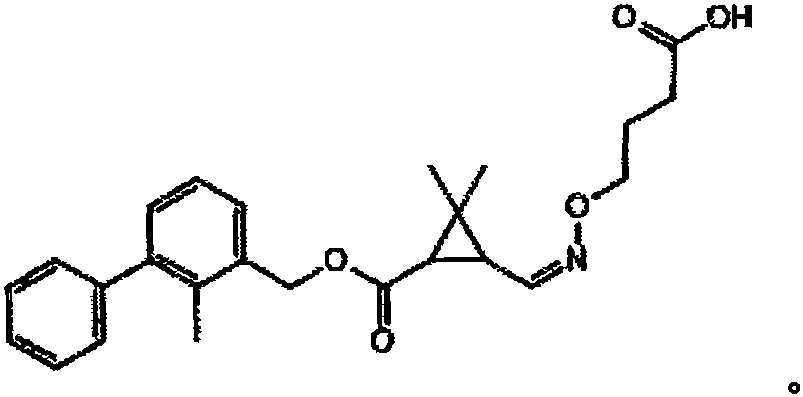Test strip for detecting bifenthrin and application of test strip
A technology of bifenthrin and test strips, which is applied in the field of test strips for detecting bifenthrin, can solve problems such as soil pollution, excessive concentration, and inability to act as a drug barrier, achieving high sensitivity, long shelf life, The effect of short detection times
- Summary
- Abstract
- Description
- Claims
- Application Information
AI Technical Summary
Problems solved by technology
Method used
Image
Examples
Embodiment 1
[0035] Example 1 Preparation of test strips for detection of bifenthrin
[0036] The preparation method of the test strip mainly includes the following steps:
[0037] 1) Preparation of a conjugate release pad sprayed with bifenthrin monoclonal antibody-colloidal gold marker;
[0038] 2) Prepare a reaction membrane with a detection line coated with bifenthrin hapten-carrier protein conjugate and a quality control line coated with goat anti-mouse anti-antibody;
[0039] 3) Assemble the prepared combination release pad, reaction membrane, sample absorbent pad, water absorbent pad and PVC bottom plate prepared in 1) and 2) into test strips.
[0040] The following is a step by step description:
[0041] 1. Preparation of bifenthrin hapten
[0042] Take 0.322g of compound a, add 30ml of methanol to dissolve it, clarify it, and label it as solution A, take 0.155g of compound b, add 2ml of water to dissolve, add to solution A, stir at room temperature for 2h, stop the reaction, remove methanol, ...
Embodiment 2
[0074] Example 2 Detection of Bifenthrin Residues in Samples
[0075] 1. Test with test strips
[0076] Use a pipette to draw 3 drops of the sample solution to be tested vertically and drop 3 drops into the sample hole. When the liquid flows, start timing, react for 5-10 minutes, and determine the result.
[0077] 2. Analyze the test results
[0078] Read the results through the colloidal gold analyzer ("Analyzer"):
[0079] Negative (-): indicates that the concentration of the substance to be tested in the sample is lower than the detection limit;
[0080] Positive (+): indicates that the concentration of the substance to be tested in the sample is equal to or higher than the detection limit;
[0081] Invalid: indicates that the test needs to be retested.
Embodiment 3
[0082] Example 3 Sample testing example
[0083] 1. Detection limit test
[0084] Take samples of blank soil and door and window holes, add bifenthrin to the final concentration of 7.5, 15, and 30 mg / kg respectively, take test strips for testing, and repeat the measurement for each sample three times.
[0085] When using test strips to test soil and door and window samples, when the concentration of bifenthrin is 7.5mg / kg, the analyzer shows negative; when the concentration of bifenthrin is 15, 30mg / kg, the analysis The meter shows positive.
[0086] 2. False positive rate and false negative rate test
[0087] Take the soil with a known bifenthrin content of 15mg / kg, 20 positive samples for door and window holes, and 20 samples for each soil with a content of less than 15mg / kg, and 20 negative samples for door and window holes. Use three batches of test strips to test and qualitatively Calculate the negative-positive rate of the two methods of determination and quantitative determinat...
PUM
 Login to View More
Login to View More Abstract
Description
Claims
Application Information
 Login to View More
Login to View More - R&D
- Intellectual Property
- Life Sciences
- Materials
- Tech Scout
- Unparalleled Data Quality
- Higher Quality Content
- 60% Fewer Hallucinations
Browse by: Latest US Patents, China's latest patents, Technical Efficacy Thesaurus, Application Domain, Technology Topic, Popular Technical Reports.
© 2025 PatSnap. All rights reserved.Legal|Privacy policy|Modern Slavery Act Transparency Statement|Sitemap|About US| Contact US: help@patsnap.com



